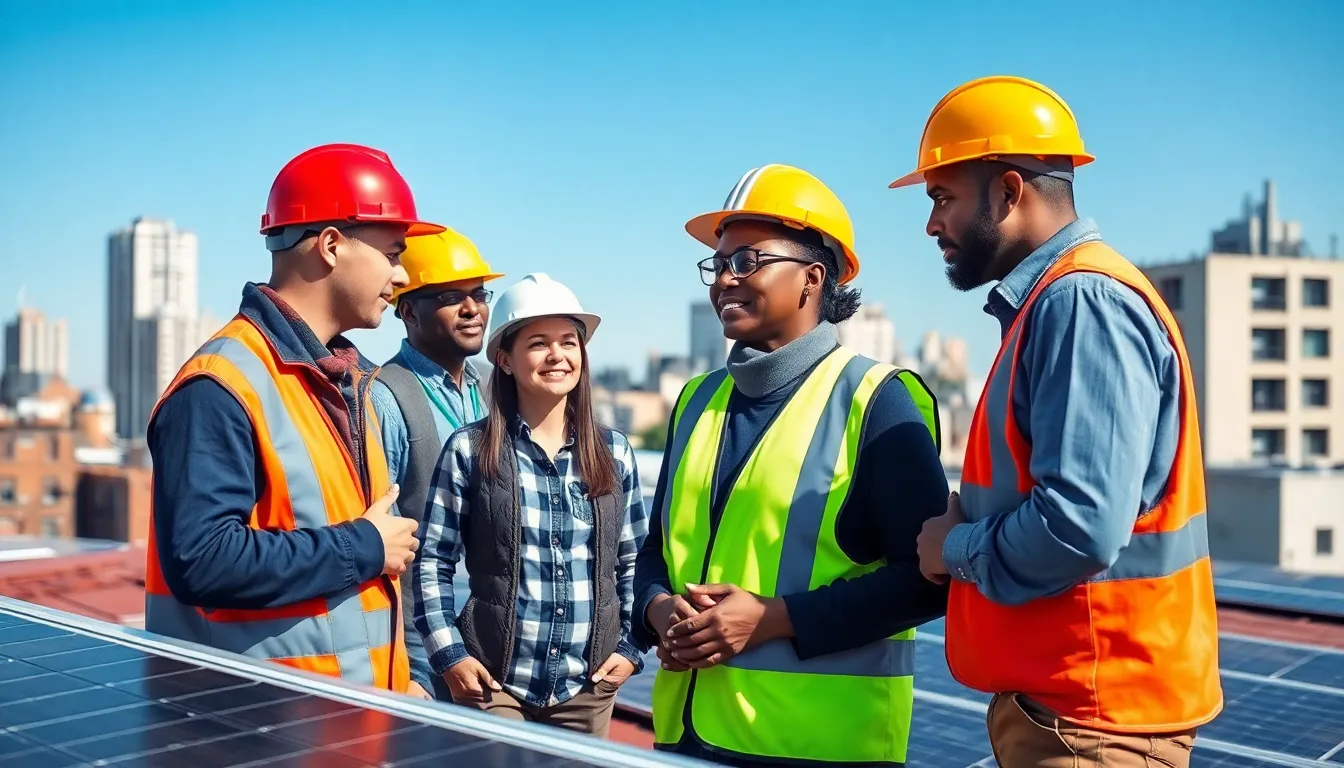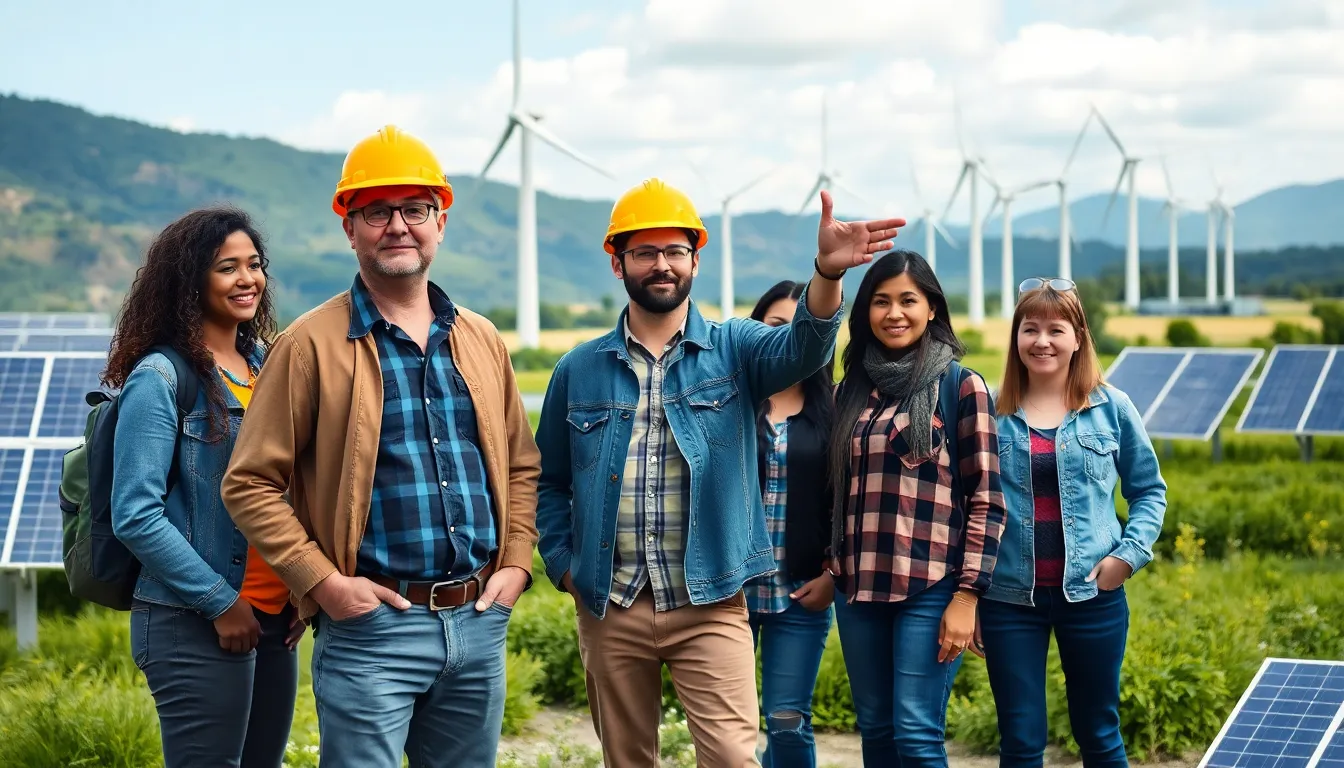In a world where Mother Nature can be a bit of a drama queen, disaster-resistant building tech is the superhero we didn’t know we needed. Imagine a house that laughs in the face of hurricanes, earthquakes, and floods—now that’s a home worth investing in! With climate change throwing curveballs left and right, it’s time to rethink how we construct our shelters.
This isn’t just about bricks and mortar; it’s about smart designs and innovative materials that keep families safe and sound. Whether it’s a fortress against flooding or a cozy bunker during a tornado, disaster-resistant tech is making waves in architecture. Dive into the world of resilient buildings and discover how they’re not just surviving but thriving in the face of adversity.
Table of Contents
ToggleOverview Of Disaster-Resistant Building Tech
Disaster-resistant building technology encompasses a range of innovative approaches aimed at enhancing structural integrity. Key designs incorporate advanced materials that provide strength and flexibility, which helps withstand seismic activity and wind forces. Important aspects of this technology include reinforced concrete, steel frames, and impact-resistant windows.
Techniques such as elevated foundations help protect structures from flooding. This strategy minimizes water damage while ensuring easier access during extreme weather events. Additionally, modular construction methods facilitate rapid deployment of temporary shelters during crises, demonstrating versatility in disaster response.
Research indicates that integrating smart technology into new building designs improves monitoring and safety. These systems use sensors to detect structural issues, providing real-time data to ensure timely maintenance or evacuation. Furthermore, energy efficiency becomes crucial in disaster-resistant designs, allowing structures to maintain livability during prolonged emergencies.
Countries affected by frequent natural disasters have started implementing stricter building codes, promoting resilience through policy changes. These regulations encourage the adoption of disaster-resistant features in both new builds and retrofits. Architects and engineers emphasize the importance of community wellbeing, prioritizing designs that allow for quick recovery and continuity of services.
Organizations dedicated to disaster preparedness often collaborate with local governments to provide resources and training. Workshops educate builders and homeowners on best practices for implementing resilient technologies effectively. Collective efforts drive progress, contributing to safer environments and reduced long-term recovery costs.
Key Features
Disaster-resistant building technology incorporates several key features that enhance safety and resilience. These features play a crucial role in minimizing damage during extreme weather events.
Structural Integrity
Structural integrity is vital for any disaster-resistant building. Engineers focus on designing buildings with reinforced concrete and robust steel frames. This combination provides added strength to withstand seismic activity and high wind forces. Elevated foundations also contribute to structural integrity. By raising buildings above potential flood levels, they decrease water damage risk. Using shear walls and cross-bracing techniques ensures stability during earthquakes. Each element combines to form a structure capable of enduring significant challenges, ensuring occupant safety during disasters.
Material Durability
Material durability directly impacts the effectiveness of disaster-resistant technology. Advanced materials like impact-resistant windows play a critical role in safeguarding against flying debris during storms. These windows prevent shattering, thereby protecting occupants inside. Additionally, weather-resistant siding and roofing materials enhance longevity and resilience against harsh conditions. Concrete treated with additives can resist moisture and prevent degradation from floods. Selecting high-performance materials ensures buildings remain functional and safe over their lifespan. Emphasizing durable construction materials supports long-term safety and reduces repair costs after disasters.
Types Of Disaster-Resistant Technologies
Disaster-resistant technologies play a crucial role in enhancing building safety against natural hazards. Various methods exist to ensure structures withstand the elements.
Earthquake Resilience
Engineers utilize reinforced concrete and steel frames to improve earthquake resilience. Shear walls add stability, preventing excessive movement during seismic activity. Cross-bracing techniques further strengthen the structure, distributing forces evenly. Implementing base isolators allows buildings to shift independently, minimizing damage during tremors. Building codes in earthquake-prone regions often mandate these features, ensuring new constructions adhere to safety standards. Retrofitting older buildings with these technologies significantly reduces damage risk while increasing occupant safety.
Flood Mitigation
Flood mitigation techniques focus on elevating buildings above flood levels. Elevated foundations combined with flood-resistant materials reduce water damage risks. Proper site drainage systems direct water away from structures, minimizing potential impacts. Some designs incorporate permeable paving, allowing water absorption that alleviates pooling. Incorporation of flood vents in walls also aids in equalizing pressures during flood events, further protecting structural integrity. Municipalities often enforce floodplain regulations that promote these design strategies, enhancing community resilience against flooding.
Wind Resistance
Wind resistance strategies include the use of aerodynamic building shapes that minimize wind pressure. Strong roofing materials, such as metal and engineered wood, support structural integrity amid powerful gusts. Installing impact-resistant windows protects interiors from debris and flying objects during storms. Additionally, anchoring systems secure buildings to foundations, preventing uplift and shifting. Local building codes often emphasize wind resistance features, particularly in hurricane-prone areas. Implementing these technologies enhances safety and longevity, reducing repair costs after severe weather events.
Benefits Of Implementing Disaster-Resistant Building Tech
Disaster-resistant building technology offers various advantages, enhancing both efficiency and security against natural hazards.
Cost Efficiency
Initial investments in disaster-resistant tech often lead to long-term financial savings. Homeowners and builders notice reduced repair costs following disasters due to reinforced materials and resilient designs. Insurers typically offer lower premiums for structures featuring disaster-resistant technology, recognizing the diminished risk. Government incentives may also support integrating these features in new constructions. For example, many states provide tax credits or grants for implementing elevated foundations and flood-resistant designs. Overall, choosing these technologies encourages smarter investments and better financial management.
Safety Enhancements
Safety improvements form a crucial aspect of disaster-resistant building technology. Structures designed with advanced materials enhance stability during extreme weather events. Reinforced concrete and steel frames offer greater durability, significantly reducing collapse risks in earthquakes and high winds. Furthermore, impact-resistant windows protect inhabitants from debris and breakage, while elevated foundations mitigate flooding dangers. Smart technology integration helps monitor building conditions in real-time, enabling swift responses to emerging hazards. Prioritizing these safety enhancements fosters community resilience and protects lives, ensuring that structures withstand the challenges posed by natural disasters.
Challenges And Considerations
Disaster-resistant building technology faces several challenges and considerations that impact its adoption and effectiveness.
Regulatory Hurdles
Navigating the complex landscape of building regulations poses significant challenges. Authorities often enforce stringent codes that vary by location. Adherence to these codes requires builders to stay informed about local requirements, which can complicate project timelines. Changes to codes may slow down the adoption of innovative technologies. Stakeholders often encounter delays in the approval processes due to bureaucratic inefficiencies. Ensuring compliance necessitates collaboration between architects, engineers, and regulatory bodies. This collaborative approach fosters understanding and streamlines the integration of disaster-resistant features into construction projects.
Initial Investment
Initial costs associated with disaster-resistant building technology can deter decision-makers. Investment in advanced materials and innovative designs often requires funding that exceeds traditional construction budgets. Over time, these costs can lead to substantial savings in maintenance and repair. Homeowners and developers may find that increased upfront expenses result in lower insurance premiums due to enhanced safety features. Long-term financial advantages frequently offset initial investments, making resilience a worthwhile consideration. Financial incentives from government programs can also alleviate some investment burdens, encouraging more widespread adoption of resilient practices.
Conclusion
Embracing disaster-resistant building technology is essential for creating safer communities in an era of increasing climate challenges. By prioritizing innovative designs and durable materials, builders can significantly enhance the resilience of structures against natural disasters. This proactive approach not only protects lives but also promotes long-term economic stability through reduced repair costs and lower insurance premiums.
As more countries adopt stricter building codes and regulations, the integration of these technologies will likely become a standard practice. Collaboration among architects, engineers, and local governments will be crucial in overcoming obstacles and ensuring that communities are better prepared for future disasters. Ultimately, investing in disaster-resistant building technology is a strategic move toward safeguarding both individuals and the environment.







